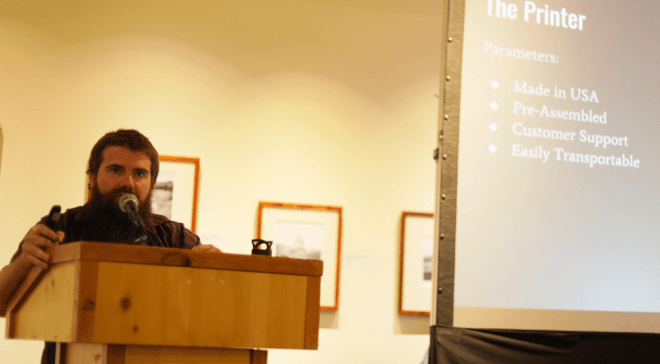While at the Cody Firearms Museum symposium Arsenals of History, an interesting thought experiment was brought up after a presentation by Scott Gausen, of the Springfield Armory National Historic Site, on 3D printing and scanning in museums. While discussing this, several of us threw out a thought experiment that would be a radical change to how we view firearms images and especially reference images.
Seeing the current trajectory of both 3D printing and 3D scanning today, and seeing where it may go several decades from now, what if it were entirely possible to completely scan a historical firearm (or a modern one) down to the smallest component and have every single aspect of that firearm in that digital scan? As a contemporary example, imagine the popular World of Guns simulation game, but instead of each firearm being based on generic computer models, you’d be faced with the scan of precisely one firearm. Instead of taking pictures of firearm reference collections, we’d have scans of everything in the collection, where you could disassemble every component on a screen. Complete with all the markings, blemishes, nicks and dings, and everything on it.
Another way to think of this is through the history of photography. Previously all firearm reference images in books were all in black and white as the technology hadn’t advanced. Today, we demand firearm images be in color, because we’ve advanced to that point. In 50 years, could a future “Collector Grade Publications”-equivalent book have 3D scans of the guns instead of flat pictures (very Harry Potter-like)? As a researcher, this would appear to open up a whole new world of research opportunities. Without visiting different collections on opposite sides of the world, would I be able to simply find the components in say, for example, two prototypes on a screen, “disassemble” them and put them side by side on the same screen, to compare differences in actual scale? In addition, one could arrange firearms in different photographic angles that one might not have even conceived while there in person.
Let alone the researcher perspective, how about we look at this from a user one. Instead of learning the hard way that a grip, a scope, a bipod doesn’t fit on a shooter’s rifle, would one be able to simply get online, find the 3D picture of that item and “place” it on a 3D picture of your own rifle?
And Printing?
To play Devil’s Advocate while we are at it, if scanning technology has advanced to this elevated degree in several decades, what about printing? Currently the majority of 3D printing is done in polymers due to the material constraints. But could we print in wood? metal? Bakelite? Would it be possible to print in materials that are no longer available or impossible to source (Ivory for example)?
So let us say that advances in scanning technology have exponentially improved. And that advances in 3D printing has as well. Combining both of these, could we then “print” an actual replica of say, an early Colt Walker prototype that would realistically be absolutely identical to the real thing, apart from the fact that one was created yesterday and the other two hundred years previous ( adjusting for time from now). What if machines could even match the fragility and brittleness of the original examples? We could have an exact version as it is materially-composed today, in addition to maybe an “As it was” when it first came out of the factory centuries ago? These examples could then be fired, abused, etc… without having to harm the original example. The extraordinary benefit of this would be that we could test these pieces just as they would have been tested in their original time period.

An Artec MH 3D-scanner that is handheld. Could we be using this to scan Vickers guns for digital reference collections?
As a researcher, could I “print” out two contemporary designs in my home city, from two completely different collections, and then literally compare them together in real-time, seeing how parts were interchangeable or not, by simply taking the replicas apart? Legally and ethically speaking, how does one make it so the exact replica can be differentiated from the real one, lest they get confused? How does this affect the collector market if you can not only have a reproduction, but an exacting reproduction in every possible way?
All this futuristic thinking may sound like some sort of Star Wars idea, but look at what is already happening today, such as the restoration of the Notre Dame due to the intense scanning of the interior from previous attempts at recording it through 3D scanning. The idea of cloning the meat of extinct wolly mammoths is a popular and some think feasible one in the scientific community. Would recreating and printing material objects be that much more of a challenge than a biological substance?
 Your Privacy Choices
Your Privacy Choices




